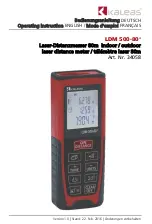
Proline Promass 80S, 83S
Hauser
3
Function and system design
Measuring principle
The measuring principle is based on the controlled generation of Coriolis forces. These forces are
always present when both translational and rotational movements are superimposed.
F
C
= 2 ·
Δ
m (v ·
ω
)
F
C
= Coriolis force
Δ
m = moving mass
ω
= rotational velocity
v = velocity of the moving mass in a rotating or oscillating system
The amplitude of the Coriolis force depends on the moving mass
Δ
m, its velocity v in the system, and
thus on the mass flow. Instead of a constant angular velocity
ω
, the Promass sensor uses oscillation.
This causes the tube through which the fluid is flowing to oscillate. The Coriolis forces produced at the
measuring tubes cause a phase shift in the tube oscillations (see illustration):
• If there is zero flow, i.e. when the fluid stands still, the oscillation measured at points A and B has
the same phase, and thus there is no phase difference (1).
• Mass flow causes deceleration of the oscillation at the inlet of the tubes (2) and acceleration at the
outlet (3).
a0003383
The phase difference (A-B) increases with increasing mass flow. Electrodynamic sensors register the
tube oscillations at the inlet and outlet. The system balance required for proper measurement is
created by exciting an eccentrically arranged swinging mass to antiphase oscillation. This patented
TMB™ system (Torsion Mode Balanced System) guarantees perfect measurements, even in changing
process and environmental conditions. Therefore, the device is just as easy to install as the familiar
two-tube systems. Consequently, no special measures for attachment are required in front of or behind
the sensor. The measuring principle operates independently of temperature, pressure, viscosity,
conductivity and flow profile.
Density measurement
The measuring tube is continuously excited at its resonance frequency. A change in the mass and thus
the density of the oscillating system (comprising the measuring tube and fluid) results in a
corresponding, automatic adjustment in the oscillation frequency. Resonance frequency is thus a
function of fluid density. The microprocessor utilizes this relationship to obtain a density signal.
Temperature measurement
The temperature of the measuring tube is determined in order to calculate the compensation factor due
to temperature effects. This signal corresponds to the process temperature and is also available as an
output.
1
2
3
A
B
A
B
A
B




































